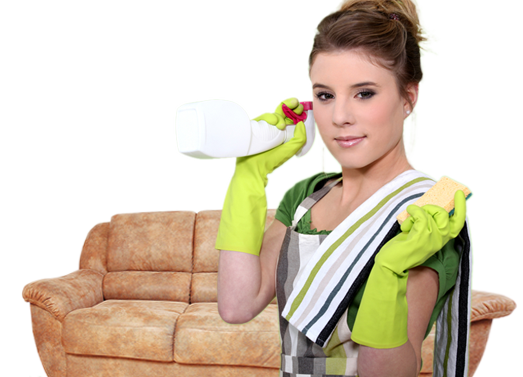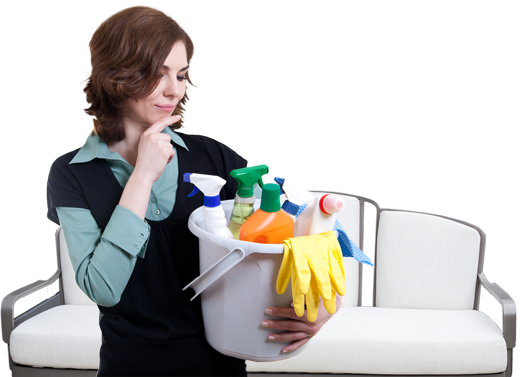Empowering Wellness with Clean Indoor Air
Posted on 01/07/2025
Empowering Wellness with Clean Indoor Air: Unlocking the Secret to Vibrant Health
Imagine your home or office as a safe haven, a sanctuary where you can relax, rejuvenate, and thrive. Now, ask yourself: is the air you breathe indoors truly clean? In a world where we spend most of our lives inside, the importance of clean indoor air cannot be overstated. In this comprehensive guide, we delve into why prioritizing indoor air quality is not just a matter of comfort, but a crucial factor for empowering overall wellness.

Why Is Clean Indoor Air So Important?
Modern lifestyles have transformed indoor environments. Air conditioning, energy-efficient insulation, synthetic materials, and household products can all contribute to indoor air pollution. According to the Environmental Protection Agency (EPA), indoor concentrations of some pollutants may be two to five times higher than typical outdoor concentrations. Empowering wellness through clean indoor air isn't just a trend-- it's a necessity for long-term well-being.
- We spend about 90% of our lives indoors, making indoor air quality critical for our health.
- Children, the elderly, and those with pre-existing health conditions are particularly vulnerable to indoor pollutants.
- Symptoms of poor indoor air quality include allergies, asthma, headaches, fatigue, and even more severe respiratory conditions over time.
The Key Pollutants We Breathe Indoors
Understanding indoor air pollution starts with knowing what pollutants could be lurking in your air. Some common indoor pollutants include:
- Particulate Matter (PM2.5, PM10): Fine particles from dust, smoke, and allergens can reach deep into the lungs.
- Volatile Organic Compounds (VOCs): Emitted by paints, cleaning products, furniture, and even electronics, VOCs have both short and long-term health effects.
- Mold and Mildew: Excess moisture can lead to dangerous mold growth related to respiratory problems.
- Biological Contaminants: Bacteria, viruses, pet dander, and pollen contribute to allergic and asthmatic reactions.
- Carbon Monoxide (CO): A deadly, odorless gas produced by incomplete combustion from gas stoves, heaters, and fireplaces.
- Radon Gas: A natural radioactive gas that can seep from the soil into homes, especially in certain geographic regions.
How Clean Indoor Air Influences Wellness
Empowering personal and family wellness is impossible without addressing air purity. Clean indoor air supports physical, mental, and emotional health in ways you might not immediately recognize:
- Respiratory Health: Reducing allergens and pollutants lowers the risk of asthma and chronic bronchitis.
- Better Sleep Quality: Clean air removes irritants that disrupt sleep, allowing for deeper rest and efficient body repair.
- Enhanced Cognitive Function: Studies associate improved indoor air quality with higher productivity, sharper focus, and mental clarity.
- Mood and Stress: Lower levels of indoor toxins are linked to improved mood and reduced anxiety and stress.
- Immune System Boost: With fewer pathogens and airborne toxins, your immune system can function optimally.
Many people observe dramatic improvements in allergy symptoms, headaches, and fatigue simply by improving the air they breathe inside their homes and workplaces.
Empowering Wellness at Home: Steps for Cleaner Indoor Air
Ready to transform your space into a wellbeing sanctuary with healthier air? Consider these practical strategies to foster a clean indoor air environment:
-
Improve Ventilation:
- Open windows routinely for cross ventilation.
- Use exhaust fans in kitchens and bathrooms to remove odors and excess moisture.
-
Prioritize Air Filtration:
- Upgrade your HVAC filters to HEPA or activated carbon types.
- Consider standalone air purifiers in bedrooms and living spaces.
-
Monitor Humidity Levels:
- Maintain indoor humidity between 30%-50% to deter mold and dust mites.
- Use dehumidifiers in damp areas and fix leaks promptly.
-
Ban Indoor Smoking:
- Tobacco smoke is a major contributor to poor indoor air.
-
Minimize VOCs:
- Choose low-VOC paints, varnishes, and cleaning products.
- Let new furniture or carpets off-gas outside before bringing them indoors.
-
Keep the House Clean:
- Vacuum carpets with HEPA filters and mop floors regularly.
- Limit clutter where dust and allergens can accumulate.
DIY and Natural Solutions for Cleaner Air
- Beeswax Candles: Unlike paraffin candles, beeswax candles emit no smoke and can help neutralize airborne toxins.
- Himalayan Salt Lamps: Some enthusiasts believe these lamps purify air by emitting negative ions, though scientific results are mixed.
- Green Cleaning Products: Use natural ingredients like vinegar, baking soda, and lemon to clean surfaces without releasing harmful chemicals.
Technology and Innovation: Smart Tools for Clean Indoor Air
Modern technology makes it easier than ever to empower wellness with clean indoor air. Consider integrating these innovations into your home or office:
-
Smart Air Quality Monitors:
- These devices track temperature, humidity, particulate matter, VOCs, and CO2 levels--giving real-time feedback and alerts.
-
Advanced Air Purifiers:
- HEPA filters, carbon filters, and UV-C light purification systems can efficiently remove a wide range of contaminants.
-
Automated Ventilation Systems:
- Integrated into smart homes, these systems adjust airflow, filtration, and humidity for optimal air quality around the clock.
The Role of Indoor Plants in Air Quality
Nature offers some beautiful solutions for better indoor air. Several studies, including NASA's Clean Air Study, suggest that indoor plants such as snake plant, spider plant, and peace lily can help absorb certain toxins and improve oxygen levels. While plants alone can't replace ventilation or filtration, they are a wonderful complement in your quest for cleaner, fresher air indoors.
Clean Air in the Workplace: A Key to Happy and Productive Teams
For employers and employees alike, empowering wellness with clean indoor air is a wise investment:
- Reduced absenteeism due to illness linked to poor air quality.
- Improved concentration and employee performance in healthier environments.
- Stronger employee morale and satisfaction, with a visible commitment to health and comfort.
Encouraging regular maintenance of HVAC systems, using certified cleaning services, and allowing for personal air purifiers or plants at workstations are small steps that have big results.
Special Considerations: Children, Seniors, and Sensitive Individuals
Some members of your household are more sensitive to air quality, including children, pregnant women, the elderly, and those suffering from allergies, asthma, or compromised immune systems. Empowering wellness with clean indoor air is especially critical for their protection and quality of life.
- Children breathe more air per pound of body weight than adults, increasing exposure risk.
- Seniors may have less resilient immune and respiratory systems, worsening air pollution's effects.
- Consult with healthcare professionals to identify and mitigate triggers in the home environment.
Testing and Maintaining Indoor Air Quality
Air testing kits can detect the presence of radon, mold spores, and other specific contaminants. For a more thorough assessment, consider hiring a certified indoor air quality professional. Regularly maintaining and calibrating smart monitors and replacing air purifier filters maximizes clean air benefits.

Frequently Asked Questions about Clean Indoor Air and Wellness
-
How often should I change my HVAC filter?
Ideally every 1-3 months, depending on usage, presence of pets, and local air quality conditions. -
Are air purifiers worth the investment for wellness?
Yes, especially for allergy sufferers, homes with pets, or if you live in areas with frequent wildfires or high outdoor pollution. -
Can indoor plants replace an air purifier?
While lovely, plants are a complement--not a replacement for robust mechanical filtration. -
Do I need to worry about radon?
If you live in an area prone to radon or have a basement, it's wise to test at least once.
The Future of Wellness: Clean Indoor Air as a Lifestyle
An empowered approach to health means making intentional choices every day about the environment you live and work in. Wellness and clean indoor air are inseparable for those seeking to feel, sleep, work, and live at their best.
As awareness spreads and technology advances, maintaining clean air indoors will become simpler and more accessible for all. By taking the steps outlined in this article, from upgrading filtration to changing cleaning habits, and by harnessing smart technology, you are investing not only in cleaner air but in a brighter, healthier future for yourself and your loved ones.
Empower Yourself Today
Start your journey to vibrant health by assessing your indoor spaces, educating your family, and making small, achievable changes. The benefits of clean indoor air reach far beyond what you can see--touching every part of your life and empowering true wellness, one breath at a time.
Empowering wellness with clean indoor air isn't just possible--it's essential. Make it your priority, and your body and mind will thank you every day.





